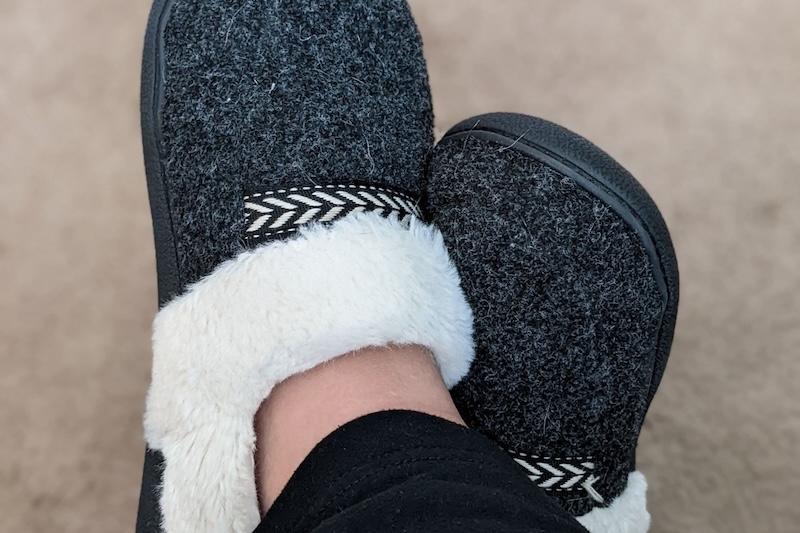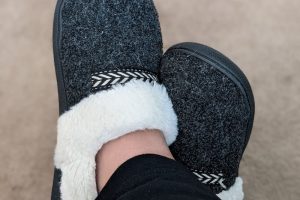Skip to content




There’s no way around it, falls are the #1 cause of injury in older adults over the age of 64. These falls can range from minor, to devastating. And in a vast majority of cases, they are preventable. Choosing the best slippers for elderly is one simple thing that can help prevent some of these falls.
In this blog post, we’ll identify some of the most common causes of falls in older people, and will share an overview of some of the easiest ways to prevent those falls. In particular, we’ll talk about the importance of the right footwear in decreasing the risk of falls and keeping seniors as safe as possible at home.
A sobering look at seniors and falls
Fall risk is highest among seniors for several reasons, including increased balance problems, mobility impairments, and foot problems in particular. A range of medical conditions and event medications themselves can add to the risk of falls, making fall prevention inside and outside of the home a critical priority. Elderly individuals are highly susceptible to complications from falls, which can cause catastrophic impact to overall quality of life.
Data from the CDC shows that over 14 million, or 25% of seniors report falling every year. And those falls are the leading cause of fall-related injuries (both fatal and non fatal) among the elderly each year. Not all falls cause injuries; however, 37% of all falls were reported to need some form of medical intervention.
Unfortunately, the association between falls and fatality in seniors is only increasing. Falls are currently the leading cause of injury-related death among seniors. The age-adjusted fall death rate increased by 41% between 2012 and 2021. But thankfully, preventing falls is something that anyone can do. There are steps you can take to stay safe at home!
Common causes of falls in an older person
Before we look into prevention, and specifically at the best slippers to help prevent falls in senior citizens, let’s look at some of the most common risk factors and causes of falls among older adults:
- Not wearing the right shoes. Ill-fitting, improper shoes can make it difficult to walk properly, especially for adults with injuries or who are weaker. Ensuring proper-fitting footwear is essential to overall safety and fall prevention. Also, buying a new pair of shoes when shoes are worn out is important to ensure that the structure and support are as intended to keep people safe.
- Going barefoot at home. House shoes can be a helpful step for an elderly person (no pun intended!) to stay safe at home during daily activities. Bare feet can increase the risk of slipping and falling, and wearing shoes all the time can improve stability and support in the ankle and foot. They can provide a sturdier foundation while walking, and the proper footwear inside the house can even help to alleviate foot pain and other health ailments.
- Loose rugs. Although rugs can provide a nice ambiance at home, they can also lead to trips and falls in the home. Either avoiding them completely or having a family member ensure they are properly secured is essential. Medication side effects. Many medications can cause dizziness, leading to an increased risk of falls. If you suspect that medications are leading to falls in you or a loved one, consider discussing the concern with your doctor.
- Eyesight, hearing, and coordination issues. All of these factors are impacted as we age. Although these issues can be mitigated by participating in a doctor-approved exercise program.
- Medical conditions. Heart disease and other health issues can lead to poor circulation and blood flow in your legs and feet. This can lead to loss of balance (and therefore, falls). Also, incontinence issues, which increase as we age, can lead seniors to try and rush to the bathroom. This can also lead to falls.
These are just a few of the most common elements that impact an older person’s risk of falling at home. Now, let’s take a look at steps you can take to reduce the risk of falls among elderly women and other seniors.
How to reduce the risk of slips and falls in seniors
Start by addressing what was noted above. This is the first step in reducing the risk of falls in elderly adults. Avoiding floppy shoes and replacing worn-out shoes is another important step. Check shoe laces for indoor and outdoor shoes to ensure they are not ripped or frayed, or that they don’t come undone easily (tripping over loose shoelaces is another risk factor!).
Avoid shoes with a smooth sole. Look for pairs of shoes that have overall comfort, but that are made for older feet. This can include velcro closure (to make it easier to tighten and avoid the shoelace issues noted above), a wide opening to make putting on and taking off shoes easy, and choosing shoes that have a good fit with adjustable straps so that shoes don’t slip off and present a risk.
More on shoes and falls
Choosing the right shoe size is critical – there are specialty stores that provide shoes of different sizes, special removable insoles for comfort and safety. They also provide different types of velcro straps, and more. This helps them to properly measure foot size and identify the right shoes for individual needs. Adding non-slip padding in kitchens and bathrooms can also be helpful. Also, adding handrails and other safety components to bathrooms for getting in and out of the tub or shower is an excellent idea.
Reducing clutter and streamlining walking paths in the home can help. Starting an exercise program can also help. Anything that helps build muscle, lose weight, and improve balance can also help.
Choosing a home care provider can also help seniors avoid falls and stay safe and healthy at home. From virtual care to in-home care services, the right home care provider can help provide physical and mental support to support the overall health and wellbeing of elderly people and those with disabilities.
Everything from helping around the house to assisting with personal grooming, toileting, bathing, and other daily tasks can help seniors stay confident and independent, but safe. This provides family members with peace of mind while keeping your senior loved ones independent and happy.
Taking a closer look at slippers for elderly
Sneakers and other heavy shoes are an essential wardrobe and functional component for seniors. But, slippers can be an excellent choice for both comfort and safety at home. Alternatively, they can provide added risk of falls for seniors.
Most slippers are lightweight shoes that keep cold feet warm in the winter months, while also simply being more comfortable (and safe) than socks without the weight and hassle of sneakers. There are slippers with both thick soles and thin soles, and a range of other factors and features.
So, which slippers are the best choice for elderly adults?
Safe slippers are most commonly those with slip-resistant soles or non-slip soles that have a solid grip on various slippery surfaces throughout the home. They can be worn safely and seamlessly from the bedroom to the bathroom and even into the kitchen because of their excellent traction.
If your feet tend to get overheated, open-toe slippers with good grip can be an excellent option. Memory foam slippers can provide additional arch support and maximum comfort. Adjustable slippers can ensure a perfect fit. These can also help when wearing socks or other changes so that you can have secure footing regardless of variables.
For those with special needs, like sensitive feet due to diabetes or specific foot injuries, it’s always a good idea to talk to your doctor (and even consider bringing in several pairs of slippers). They can help you best identify which supportive shoes are the best for your individual needs and preferences.
We are one of the top home healthcare agencies in Oklahoma City, and we can help.
Our range of senior care options in Oklahoma City helps keep your loved ones safe, happy, and healthy at home. Call us at (405) 461-6175 or contact us today to learn more.
